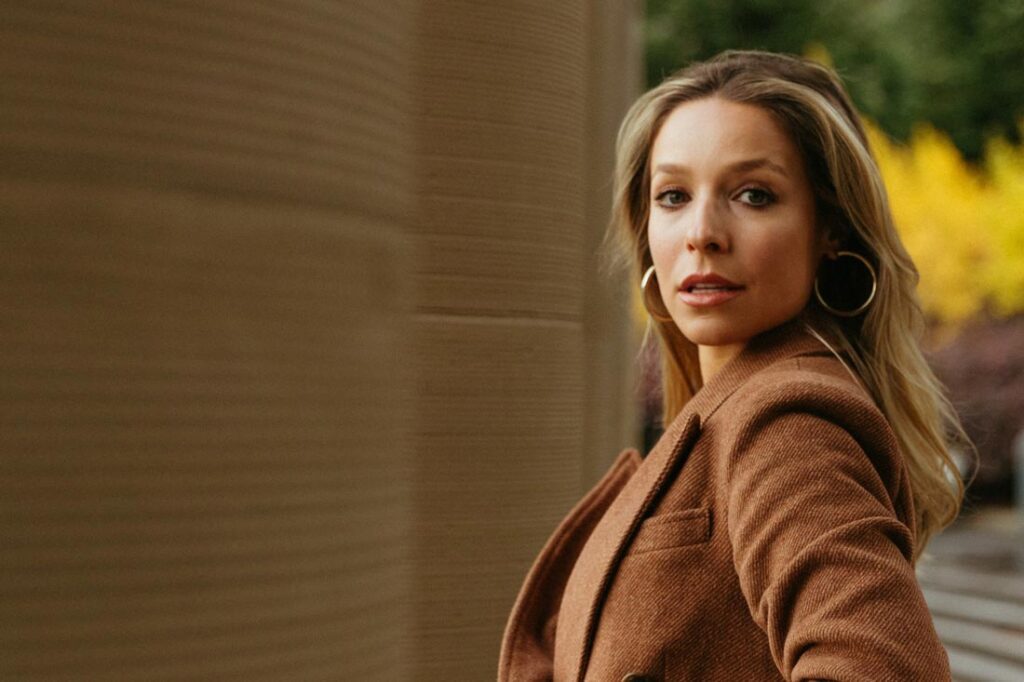Kira Dixon grew up in the Miss Congeniality era, when young girls of her age dreamed of glittering crowns and pageant gowns. After fulfilling her childhood dream by winning Miss America 2015, she set out to carve a new path, transitioning from pageant queen to a prominent figure in golf journalism.
Her story serves as a testament to personal growth, showcasing how she overcame challenges, embraced opportunities and made a name for herself in sports media—including her role at the Paris Olympics—through sheer perseverance and adaptability.
Entering the pageant world
In the year 2000, the film Miss Congeniality was released, and 12-year-old Dixon was an immediate fan. After watching the movie, she knew she had to enter a pageant. She persuaded her parents to let her sign up, purchase a dress from eBay and participate in the local pageant—which she went on to win. This fueled her spark, and Dixon was involved in yearly pageants until she went off to college.
During her senior year in college, she came across a pageant opportunity to win scholarship money for law school. Hesitant at first, she consulted an old pageant friend who encouraged her. “I still had some friends from that time in my life that had done Miss America locals. I talked to one of my friends. She [said], ‘Oh my gosh, you should totally do it. It’s so fun. Like, if not for just… one last hurrah of that life,’” Dixon recalls.
She competed in Miss New York and placed in the top 10.

Later, when she’d been accepted into law school at Notre Dame, she tried for the scholarship money. This decision paid off when she was crowned Miss America 2015. However, during her year as Miss America, she quickly found that law school wasn’t her true calling. Instead, she discovered a passion for golf media. When she was invited to play in the Pro-AM as Miss America, she saw a potential career path.
Eventually, she transferred to USC and registered for a master’s in specialized journalism.
Pageant stages to golf courses
Dixon wasn’t new to the world of golf. Her parents encouraged her to play from a young age, labeling it a fundamental “business skill.” Because of this, understanding the scores and nature of the game wasn’t difficult for her.
Additionally, her transition period from Miss America to golf journalism was an extension of her pageant queen skillset. Her previous schedule of traveling 20,000 miles a month, hosting, delivering awards and presenting taught her valuable lessons that she carried over into her new career.
Following her reign as Miss America, Dixon moved to Los Angeles and leveraged her pageant network to land a hosting gig on the red carpet. Gradually, she built her reputation in golf media by attending similar tournaments and networked in the community. Her hard work paid off, and her niche grew as invites and collaborations poured in.
On her path, she also learned more about the people involved, not just about the sport and its associated lifestyle. “I was really passionate about the stories of the actual people that are making golf their lives… and what that takes,” Dixon shares. “And I found myself… really drawn to the actual reporting and journalistic part of the golf media landscape experience.”
Setting her sights on sports television
Determined to follow her dream and deepen her understanding of the golf community, she pursued openings at sports television networks. That was when the real grind began. Establishing her credibility in golf media was essential, and she recalled several learning stages in the process. She wasn’t a professional golfer, but she had on-camera hosting experience. While she‘d never reported unscripted content on live TV, she had the speaking skills for it.
She contacted reps consistently during this time. One of the biggest lessons she had to learn was that rejection was part of the process. This taught her resilience.
“I heard—and still hear—the word ‘no.’ Then I heard the word ‘yes,’” she recounts. “You have to just be like, very OK with constant rejection or constant, like, ‘Oh, we’ll circle back.’ And… it took me a little bit to understand that… there’s nothing personal about that. That’s just… the nature of the business… [and] I personally said yes to anything and everything I could.”
Growing to find success
Dixon’s big break came when the United States Golf Association cold-called her and offered her a reporting opportunity as a digital host for its championship coverage. After accepting the role, she acquired valuable on-the-job experience. “I grew so much in having an organization kind of just believe in me and be able to, like, throw me out into the wilderness and see if I can figure it out,” she says.
However, later down the pipeline, Dixon’s career plans were halted by the pandemic, so she decided to apply to the USC Annenberg School for Communication and Journalism and hone her skills in traditional sports journalism. As a result, she was introduced to writing game stories and investigative pieces and understanding box scores.
Following graduation, she received a hosting offer for a lifestyle show called Golf Advisor on the Golf Channel. From there, her hard work culminated in a live television reporter role for the PGA, a well-known golf conference, and she was promoted to reporter and host for the Golf Channel and NBC.
While her expertise is in golf, Dixon helped make history at the Paris Olympics as an on-call reporter this past summer. After reporting on U.S. swimming events in the years leading up to the Olympics, an NBC executive offered her the role of sports desk reporter. The switch from golf reporting to the Olympics was new ground for her—she describes the reporting style as being “on-the-fly” and fast-paced.
For each sport, she would quickly learn the basics from the provided research packets, from how scoring worked to which athletes to focus on. This was also a great gateway into other sports fields—she branched out into equestrian, rowing, trampoline, water polo and more. She describes the experience as exhilarating.
Building a growth mindset
Today, Dixon is counting her career milestones. Her unique transition from Miss America to reporting on live television taught her how to build a growth mindset. She credits the feedback and constructive criticism she received throughout the years for where she is now.
“I think the most important growth part for me to get to where I am today—which is now, like, four years later in the Golf Channel—[is] having just mountains and mountains and mountains of feedback,” she says.
Reflecting on her starting point 10 years ago, Dixon’s takeaway is that her path has ultimately turned out better than she’d envisioned. Her schedule is just as busy, and she still travels 30 weeks out of the year, but she has shifted her primary focus to find more stability and work-life balance.
Ultimately, she believes that growth is a part of every career. “There is a space for everyone. You have to work very, very hard to get your space, but there is a space,”
Photo by Megan Goetz






